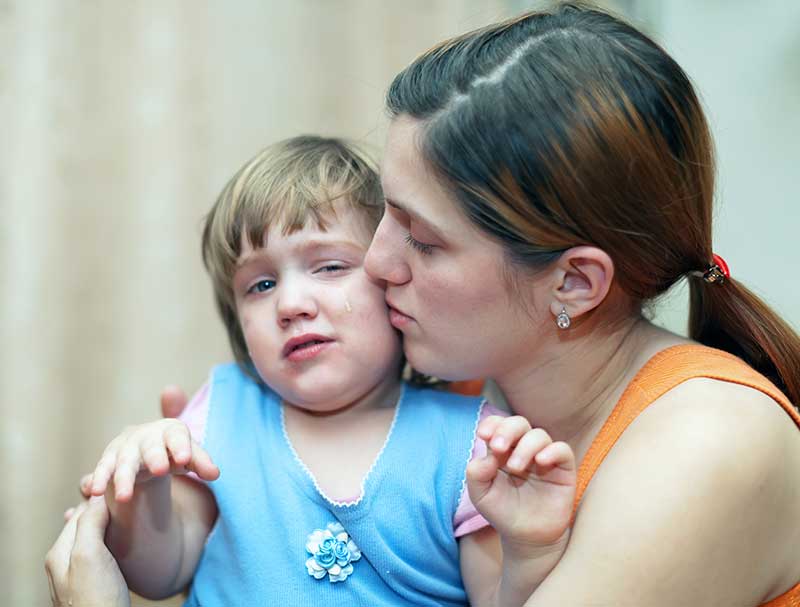Growing Up In Santa Cruz recently featured Positive Discipline articles discussing the differences between punishment and discipline.
These are the key take-aways: punishment is something that usually stems from adults getting angry with children and mistakenly believing that it is the effective option to change their behavior. Over the long term, however, punishment results in resentment, revenge, rebellion, and retreat. Positive discipline, on the other hand, is expressed not with anger but with compassion, and it is exercised with a balance of kindness and firmness (the authoritative parenting style) so as to help children feel better (the relationship-focused approach) and in turn do better (what we all think of as respectful, positive behavior).
Traditional parenting approaches are behavior-focused with the short-term goal of gaining compliance; however, such approaches ultimately undermine the very safety, connection, and true discipline we want to provide for our children. In this article we will outline the main reasons that Positive Discipline is not only unique but effective over the long term.
Many of us have heard before that humans are social beings. For more than a century, people have explored the implications of that, if for no other reason than to improve our understanding of human behavior. Alfred Adler and Rudolf Dreikurs are the psychologists whose ideas/theories are most prevalent in and relevant to the Positive Discipline approach.
They believed that human behavior is best motivated by something more meaningful than rewards and punishments. Their work culminated in the idea that all human beings (especially children), have three fundamental social needs: physical and emotional safety, a sense of belonging and connection, and what Adler referred to as gemeinschaftsgefühl, a feeling of significance emanating from the positive contributions that people make with and for one another.
When these needs are met, children are more likely to discover and develop their capabilities, experience intrinsic motivation (the desire to make good choices for their own reasons), and enjoy positive relationships with themselves and others.
Adults play a critical role in helping children get their needs met both through our own behaviors (modeling) and our interactions with them. At the same time, we recognize that Positive Discipline concepts, while easy to understand, require patience, empathy, and lots of practice.
Based on the extensive research conducted both in the world of neurobiology and trauma-informed care, Positive Discipline considers safety as a top priority. When our safety is compromised, our brains tend to go into a fight, flight, or freeze mode. When we feel safe, however, our brains are better prepared to think, learn, and problem solve.
Positive Discipline tools are specifically designed to prioritize and meet everyone’s need for safety. One of the Positive Discipline tools that best demonstrates this is the positive time-out. In contrast to the traditional, punitive time-out, the positive time-out offers caregivers and children alike the time and space they need to cool off when a conflict becomes heated and then regroup once everyone is feeling better to attempt to work out a solution.
Positive Discipline takes Abraham Maslow’s concept of belonging in his hierarchy of needs to the next level through its focus on enhancing and preserving the long-term relationship between adults and children.
While other parenting methodologies promote a power over (as opposed to power with) approach, Positive Discipline helps parents practice connection before correction (an extension of what Dreikurs referred to as discovering the beliefs behind the behaviors).
As a way of synthesizing those two concepts, consider Adler’s and Dreikurs’ assertion that behavior is a purposive form of communication that conveys met and unmet needs, and that unmet needs lead children to feel discouraged and thus behave accordingly.
Connection before correction can be as simple as asking children curiosity questions to ascertain how/what they are feeling, offering empathy and validation, or providing them the encouragement they need to feel better before we attempt to address their challenging behavior(s) and uphold our limits. Thankfully, there are times when unmet needs are easier to address due to the fact that they are more biological in nature.
For example, sometimes children are uncooperative simply because they’re hungry and/or tired. In those cases, giving children something to eat and/or letting them rest are the best solutions.
Finally, unlike so many other approaches, Positive Discipline is developmentally appropriate as it takes children’s ages and stages into account. As such, while sharing common core elements, the Positive Discipline tools that are designed for toddlers are quite different from those that are designed for school-age children and adolescents. Being developmentally appropriate also entails recognizing and honoring the uniqueness of each child (e.g., appealing to their individual temperaments) and having reasonable expectations of children based on what they can and can’t do.
To learn more about Positive Discipline, download free parenting tip sheets, and sign up for workshops and trainings, please visit Positive Discipline Community Resources online at www.pdcrcc.org.
This article was co-authored by Sarah Nofi and her husband Steven Weiss.Sarah is a Certified Positive Discipline Parent Educator, a former Montessori teacher, currently an educator at the Cabrillo College Children’s Center, and a proud parent of her now adult son. Steven Weiss is a Certified Positive Discipline Parent Educator, a former child welfare social worker and clinical therapist, and currently an alternative education instructional aide for the Santa Cruz County Office of Education.







